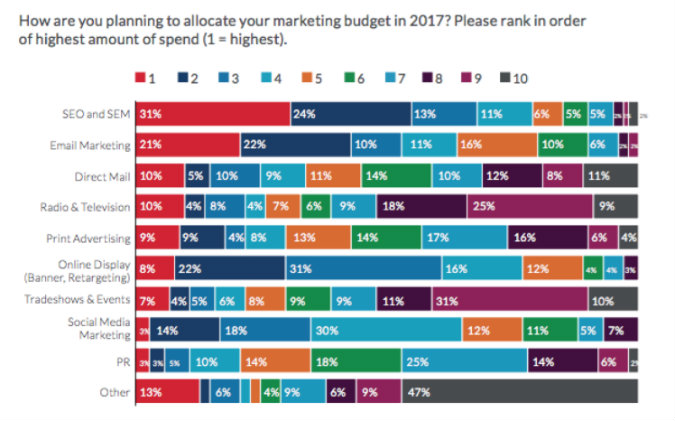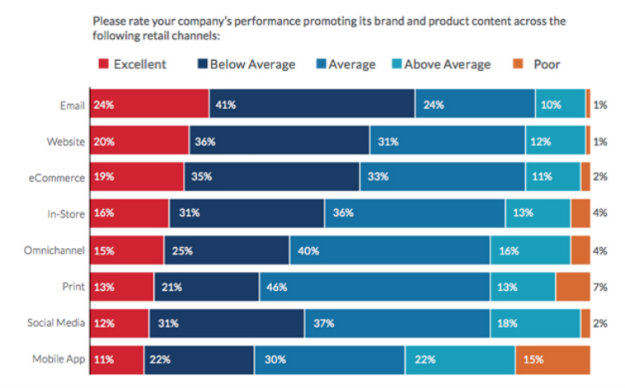 Marketing used to be a relatively simple process for the retailer. Stock the shelves in-store, put a poster in the window, an ad in the local paper, maybe even place a TV or radio commercial and you could be confident you’d done as much as you could to reach the consumer. The advent of the digital world has changed all of that. In the multi-channel, multi-marketplace, and multi-device landscape we operate in today—it’s the consumer who is in control of how they engage with the retail brand.
Marketing used to be a relatively simple process for the retailer. Stock the shelves in-store, put a poster in the window, an ad in the local paper, maybe even place a TV or radio commercial and you could be confident you’d done as much as you could to reach the consumer. The advent of the digital world has changed all of that. In the multi-channel, multi-marketplace, and multi-device landscape we operate in today—it’s the consumer who is in control of how they engage with the retail brand.
Today’s consumers want high value content tailored to their requirements, relevant to their needs, and delivered when and where they want it. Brands that fail to meet these exacting demands of the new breed of savvy consumers just aren’t going to build the trusted consumer relationships, which are so vital in today’s ultra-competitive retail landscape.
According to a recent benchmark report from WBR Digital and ADAM Software, brands are increasingly using intelligent consumer data to drive the cross channel experience shoppers demand. Driving Cross-Channel Experiences with Intelligent Consumer Data looked at over a hundred and thirty enterprise retailers—each with annual revenue of more than $500 million. The results give an interesting insight in to how retailers are using data to craft personalized digital marketing initiatives, across all channels, based on the individual context of each consumer.
Budgets are Following Measurable Channels
A good indicator of how much intelligent data is being used is to follow the marketing budget dollars. As this graphic from the study illustrates retailers are prioritizing digital channels where intelligent data can be most easily analyzed and insights acted upon quickly.

Source: Driving Cross-Channel Experiences with Intelligent Consumer Data
SEO, SEM, and email marketing channels stand out as the highest priorities, while channels through which data is less readily available are attracting a lower proportion of budget. Some data driven channels such as online display and social media marketing, while not a top priority for many, still rated as a top four spend.
Measuring Multiple Marketplaces
The prevalence of first-party marketplaces—such as Amazon and Walmart—makes them attractive places to be for retailers. The perceived loss of control and lack of data analysis may however be seen as an obstacle to providing an intelligence driven cross channel experience for many.
That may be why almost three-quarters of respondents said they sell less than 25 percent of inventory through such marketplaces. Almost half (46 percent) of those surveyed said that they expected their share of sales through this type of retailer to decrease. Similarly a majority of retailers (67 percent) reported less than a quarter of total sales utilized drop shipping, with 57 percent expecting that figure to increase.
While many enterprise retailers display a reluctance to use these types of selling platforms, the study suggests they will need to embrace them as more consumers gravitate towards centralized marketplaces—a perfect example of the shift in balance that puts consumers in the driver’s seat. Solutions are becoming available to incorporate marketplace activity giving a single-view, cross-channel picture to retailers. Shoppers seem to like the centralized concept and retailers need to find a way to get on board with them, while still retaining the unique features that distinguish them from other brands.
Creating Cross-Channel Content
As multi-channel strategies have been developed the need for high quality, immersive content has increased. Almost six in ten (59 percent) organizations said their demand for content has increased significantly in the last year, while more than nine in ten (92 percent) have seen at least some increase. To meet customer demands for fresh content at every touchpoint retailers are adapting their content strategy, using both internal and external sources for creative input, managing content, and disseminating content.
Overall four in ten multi-channel retailers rated their omni-channel performance in promoting brand and product content as above average, with just twenty percent saying their performance was below average or poor. This graphic from the report illustrates the breakdown across all channels.

Source: Driving Cross-Channel Experiences with Intelligent Consumer Data
Email, website, and ecommerce were cited as best performers while mobile apps, surprisingly given the increasing use of smartphones for shopping, were rated as the poorest performers.
Room for Improvement with Personalization
Despite the generally positive ratings for brand and product promotion, there did however appear to be less confidence surrounding the ability to personalize content. As this graphic illustrates, ratings for personalization performance lagged behind overall performance across the board.

Source: Driving Cross-Channel Experiences with Intelligent Consumer Data
Email, website, and ecommerce again rated the most strongly, confirming the supposition that the channels where intelligent data is more readily accessible are driving the cross channel experience.
Contextual Commerce
The study highlights the importance of contextual commerce in building customer relationships, while at the same time driving sales. This use of intelligent data to use content to create an interest within the environments consumers regularly inhabit, and then to provide a seamless buying experience to facilitate sales is becoming more prevalent.
Indeed many of the major platforms such as Uber, Facebook Messenger, and Amazon are already pushing the boundaries of where contextual commerce is likely to take us. Surely a route that other smaller players will have to follow to continue to compete.
Connecting Content and Data
The future of retail depends on providing the consumer with personalized, consistent, and engaging content across all channels. Access to intelligent data is undoubtedly the key to providing the immersive, cross-channel experience consumers demand and which retailers need to build the trusted relationships that are so critical to future success.
I can sum it up no better than with this quote from Isamar Batista, director of marketing and CRM at ShoeDazzle, which is contained in the report.
“Through qualitative and quantitative research, retailers can capture the shopping patterns and behaviors of our customers before we even market to them so we know what to say, when to say it, and how to say it. With the use of intelligent data, we are able to thoughtfully target the right customer with the right content to build more meaningful relationships; because when it comes to marketing, one message does not fit all.”
You can find out more about the study at Driving Cross-Channel Experiences with Intelligent Consumer Data (registration required).
What is your view of developing trends in the retail market either as a seller or indeed from the consumer perspective?
Photo Credit: jvazqu1234 Flickr via Compfight cc
This article was first published on Integrated Marketing Association.
